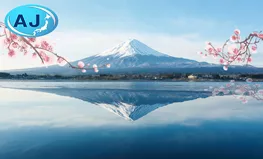Shibuya Station: Trendy Hub of Tokyo's Bustling Metropolis
Shibuya Station has to be one of the most well-known stations amongst tourists for its two main landmarks - the Hachiko statue, and the Shibuya “scramble crossing” that has appeared in countless movies and commercials over the years. The station first opened in 1885 as a stop on the Shinagawa Line, the predecessor to the current Yamanote Line that loops around Tokyo. While commemorating the unchanging loyalty of an Akita dog named Hachiko—that waited for his deceased master in front of the station every day in the late 1920s and early 1930s—with a statue, the station is also became the hub for Tokyo’s fashion and entertainment scene where change is the only constant.
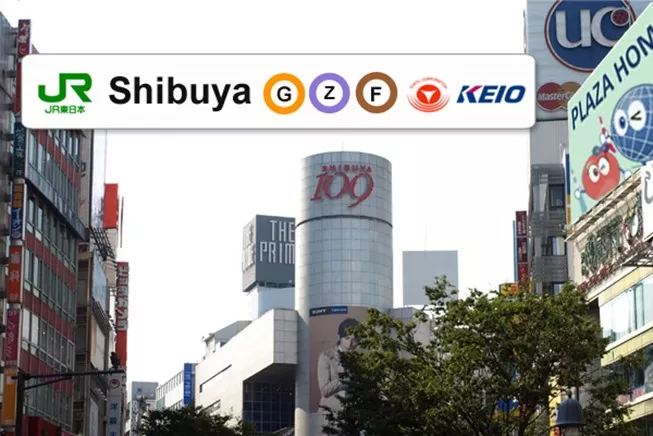
Shibuya Station Guide: Layout, Language Services and Sightseeing
As part of an area-wide redevelopment plan, Shibuya Station is currently getting a major facelift. Here you can find out about Shibuya Station’s exits, platforms, train lines and language services available, as well as a number of exciting Shibuya attractions to see in and around one of Tokyo’s trendiest stations.
Shibuya Station Exits and Layout
-Platforms & Lines
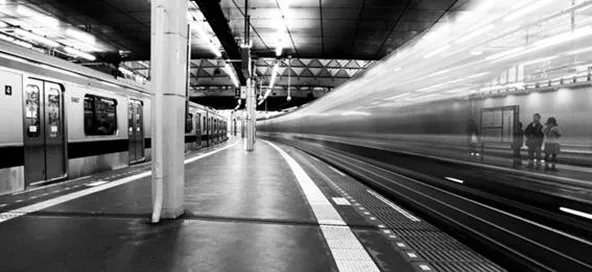
Shibuya station is the meeting point of 9 train lines. There is the three JR East Lines (the Saikyo Line, Shonan-Shinjuku Line and Yamanote Line), three private railway lines (the Keio Inokashira Line, Tokyo Den-en-toshi Line and the Tokyu Toyoko Line) and three Metro Lines (the Ginza Line, Hanzomon Line and Fukutoshin Line).
The JR Lines are located on the second floor of Shibuya station and go from north to south; the Tokyu Toyoko Line is also located there. The Tokyo Metro Hanzomon and Fukutoshin lines, and the Tokyu Den-en-toshi and Toyoko Lines both share underground platforms. To the west of the main station is Shibuya Mark City, where the Keio Inokashira Line is located on the second floor.
-Exits
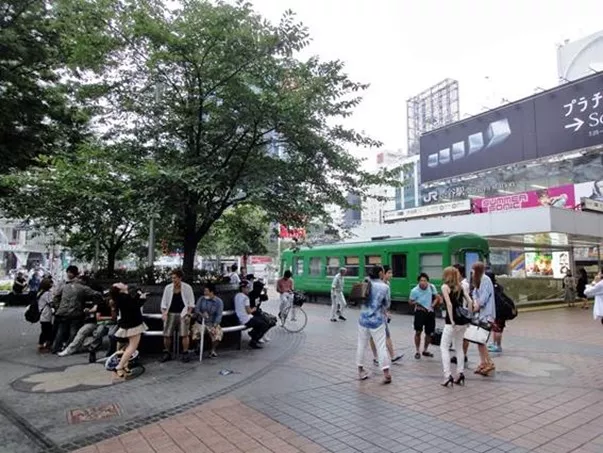
To get in and out of the station or simply to find a place to meet up amid the crowds, you can use one of six Shibuya station’s exits. The most famous meeting point, the Hachiko statue, is at the eponymously named Hachiko Exit on the West side, and is also where the Shibuya “scramble crossing” is located. Also on the West side is the Tamagawa Exit and the path to Keio Inokashira Line station, which is the gateway to West Tokyo. The exits from the Ginza Line will bring you to either end of the Tokyu Department Store. To the left of this store is the JR entrance for the Japan Rail (JR) lines: The Yamanote Line, the Shonan Shinjuku Line, the Saikyo Line, and the Narita Express, which can get you to Narita Airport in around 80 minutes.
-English Language Services at Shibuya Station
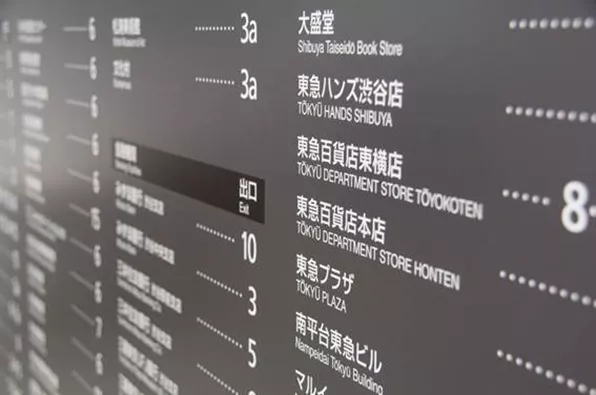
Shibuya Station has several foreign language service help desks. At the following locations, you can get maps, tourist information and free local guides to navigate the area. You can also stow your luggage at the temporary luggage storage center.
Shibuya Station Tourist Information Desk
The Tourist Information Desk is located inside Shibuya station on Basement 2 floor, near the Miyamasuzaka Center Exit and serves the Tokyu Lines and Tokyo Metro Lines. Here you can find copies of Tokyo Time Out (a well-known guide for Tokyo expats) as well as various other guides, maps, and even help in English or Chinese.
Shibuya Station Concierge
At this concierge, set up along the connecting passageway on Basement Level 4, you will find English-speaking staff smartly-dressed in red and ready to assist you. They also patrol the Hikarie ticket gates, Miyamasuzaka ticket gates, and Hachiko ticket gates to provide on-site assistance for those looking for the locations of exits, trains, and area information.
Shibuya Temporary Luggage Storage Service Center
To avoid worrying about oversized luggage that won’t fit into a locker–or worse yet, no empty lockers at all—simply head to the Shibuya Temporary Luggage Storage Service Center just a minute’s walk from Shibuya station. Service is available in English.
Shibuya Attractions
Shibuya Crossing (“Scramble Crossing”)

Aptly dubbed a “scramble crossing”, this bustling intersection is the place to get some sweet Tokyo sensory overload. Surrounded by some of the largest LED screens you may have ever seen wrapped around buildings playing commercials and with promotional vans blaring past every other minute, there is never a dull moment near the scramble crossing. Come here if you want to people watch and be wowed by the latest fashion trendsetters—but be careful not to lose yourself in the process! Shibuya attractions don’t get more stimulating than this.
Hachiko Statue
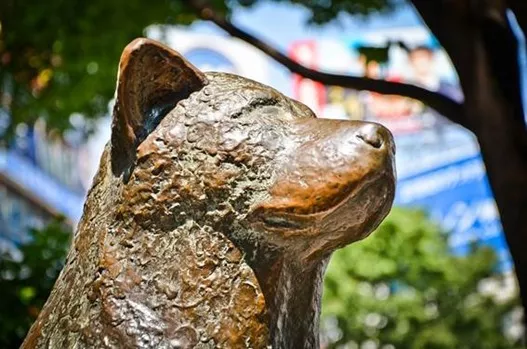
Getting a selfie with the storied Hachiko Statue is a must-do when in Shibuya. The statue is of a loyal dog from Akita Prefecture who waited every day for ten years for his master to return, unaware that the man—a professor at the agricultural department of the University of Tokyo—had passed away.
Shibuya 109

Shibuya 109 is a one-stop fashion complex where young women go to get all the latest clothes and accessories. Shibuya sets the trends for fashion in Tokyo, but be sure to pace yourself as there are over 100 boutiques across ten floors. There is also a Men’s complex located nearby.
Spanish Slope
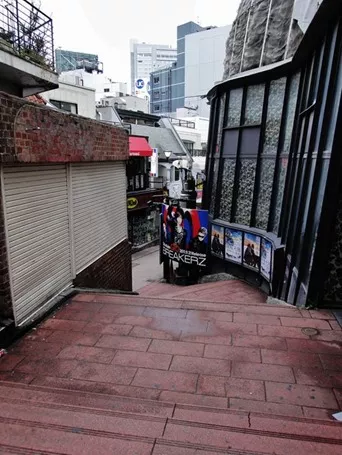
This 100m slope with stairs is lined with quaint accessory shops, fashion boutiques, cafes, and restaurants. It was named for its resemblance to a Spanish street. It is also a popular location for TV and movie shoots.
Center Gai

Literally translated as “Center Street”, this is a pedestrian zone lined with street fashion, accessory shops, the latest food crazes, popular ramen shops, izakaya, and anything else that could be needed for a fun night out.
Yoyogi Park
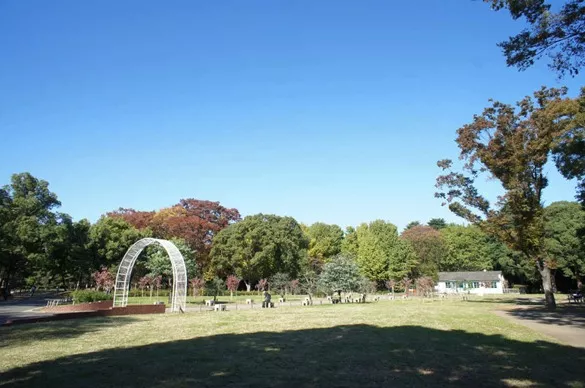
A sprawling park, only a 15-minutes’ walk from the station, Yoyogi Park is a popular gathering place for street performers during the weekend, and always very crowded during the spring cherry blossom season. It’s a great place for a picnic and some quiet away from the flashy lights and loud music that is common to the streets of Shibuya.
“The Myth of Tomorrow” Mural
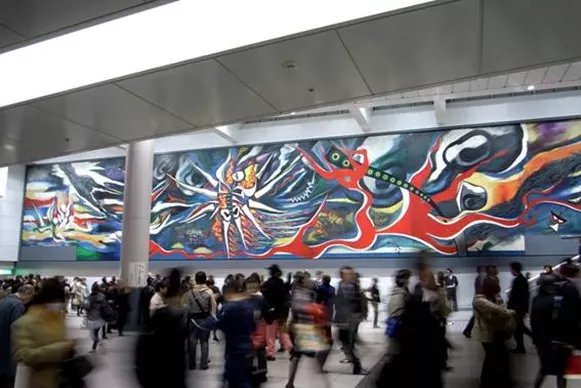
Located within the station at the connecting passage to the Keio Inokashira Line entrance, this huge wall mural by famous artist and sculptor, Taro Okamoto, depicts a human being hit by an atomic bomb. The paining was originally commissioned by a business man for use in a hotel in Mexico in 1968. Due to financial troubles, the hotel along with the painting was sold. The whereabouts of the painting were unknown for over 30 years. Found in 2003, the painting was restored and unveiled here in 2008. The mural is a powerful and thought-provoking artistic explosion that both adds to and contrasts sharply with Shibuya’s vibrant cultural scene.
Shibuya Station is a Hub for Anything and Everything
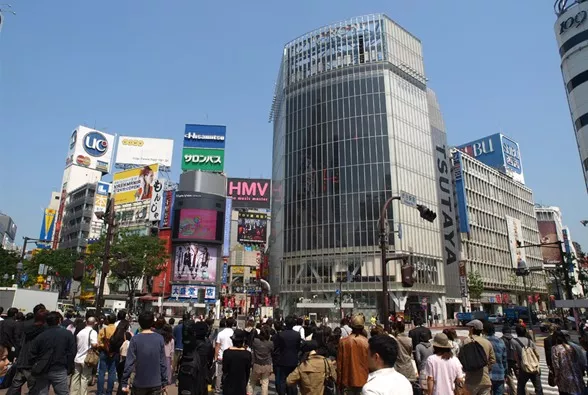
From fashionista to foodie, people watcher to park walker, the sophisticated and chic Shibuya Station has it all. Come and find your favorite spot in Shibuya in this PLAZA HOMES guide. Don’t forget to check out the what the grand old dame, Tokyo Station, has to offer as well.

- Apartments and Houses for Rent in Shibuya
- Listings of popular and luxurious apartments, condominiums, and houses designed with expats in mind.

- Apartments and Houses for Sale in Shibuya
- Listings of popular and luxurious apartments, condominiums, and houses near Shibuya Station.

















